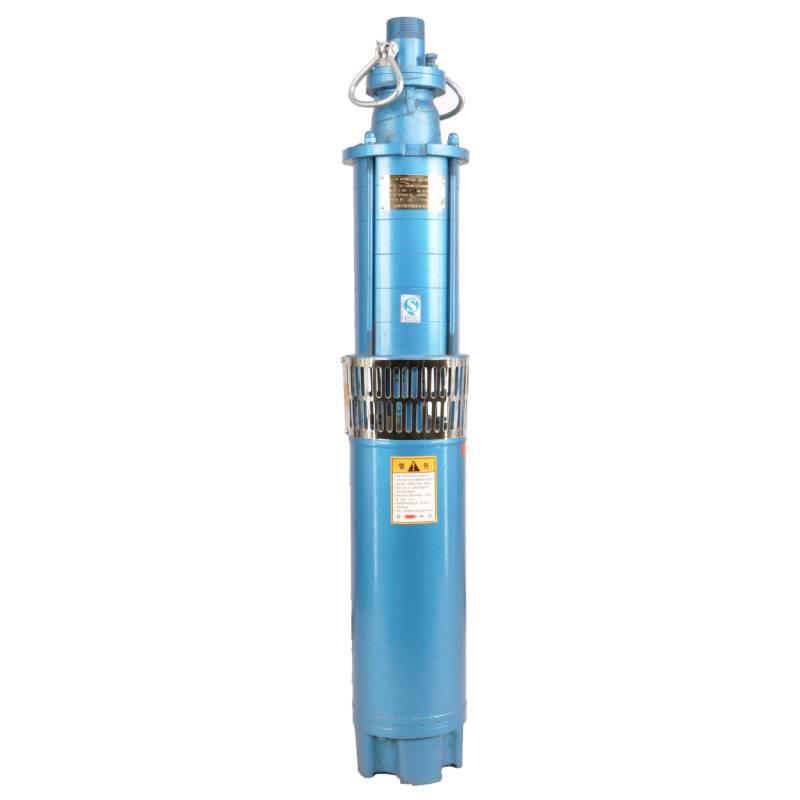Nov . 29, 2024 10:42 Back to list
Understanding 3-Wire Submersible Pumps for Efficient Water Solutions in Deep Wells
Understanding 3-Wire Submersible Well Pumps
Submersible well pumps have become essential tools in various applications, particularly in agriculture, industry, and residential water supply systems. Among the different types of submersible pumps available, the 3-wire submersible well pump is notable for its efficiency and versatility. In this article, we'll explore how 3-wire submersible well pumps operate, their advantages, and key considerations for their installation and maintenance.
What is a 3-Wire Submersible Well Pump?
A 3-wire submersible well pump consists of three main wires two power wires and one ground wire. Unlike its 2-wire counterparts, which operate on a simple principle, the 3-wire system includes an external control box that regulates the motor's operation. This design is advantageous as it separates the motor circuit from the power supply, allowing for smoother performance and better management of electrical output.
Components of a 3-Wire Submersible Well Pump
The primary components of a 3-wire submersible well pump include
1. Pump Assembly Typically made of stainless steel or thermoplastic, this part houses the impeller, motor, and other vital components that facilitate water movement. 2. Motor The electric motor drives the impeller and creates the necessary pressure to draw water from deep wells. In a 3-wire system, the motor is designed to operate more efficiently due to the control box.
3. Control Box This external unit consists of various electrical components that provide protection against overload, short-circuiting, and other electrical faults. It also regulates the starting and running operations of the pump.
4. Power Supply A sufficient power supply is crucial to ensure that the pump operates correctly. Most 3-wire submersible pumps require either single-phase or three-phase power, depending on their design and application.
Advantages of 3-Wire Submersible Well Pumps
3-wire submersible well pumps offer several advantages that make them a preferred choice for many users
1. Increased Efficiency The inclusion of a control box helps manage electrical current, resulting in a more efficient pump operation. This can lead to lower energy bills, especially for high-demand applications.
2. Temperature Control With the control box, the pump can better manage temperature fluctuations. This is crucial for preventing overheating, which can lead to motor failure over time.
3-wire submersible well pump

4. Ease of Maintenance The design allows for easier troubleshooting and repairs compared to 2-wire systems, where the entire pump may need to be pulled out for motor issues.
Installation Considerations
Proper installation of a 3-wire submersible well pump is crucial for optimal performance
1. Well Depth Determine the depth of the well and select a pump that can efficiently lift water from that depth.
2. Power Supply Compatibility Ensure that the pump matches the electrical specifications of your power supply, whether it’s single-phase or three-phase.
3. Control Box Placement The control box should be installed in a location that is accessible for maintenance but also protected from moisture and environmental factors.
4. Piping and Connections Use appropriate piping materials for both the discharge and suction lines to prevent any leaks and ensure maximum efficiency.
Maintenance Tips
Regular maintenance is key to extending the lifespan of your 3-wire submersible well pump
1. Inspect Electrical Connections Periodically check the connections between the pump and the control box for any signs of wear or corrosion.
2. Monitor Performance Pay attention to the pump’s operation. Any unusual noises, vibrations, or decreases in output can indicate potential issues.
3. Service the Control Box Ensure the control box is clean and free of debris, and verify that all components are functioning correctly.
4. Check Water Quality Poor water quality can affect the pump’s efficiency. Regular testing and treatment may be necessary, especially in agricultural applications.
In conclusion, 3-wire submersible well pumps are a reliable choice for various water supply situations. Their efficiency, coupled with the effective management of electrical operations through the control box, makes them a vital component in both residential and industrial settings. With proper installation and maintenance, these pumps can provide years of dependable service, ensuring a steady flow of water wherever it is needed.
-
Submersible Water Pump: The Efficient 'Power Pioneer' of the Underwater World
NewsJul.01,2025
-
Submersible Pond Pump: The Hidden Guardian of Water Landscape Ecology
NewsJul.01,2025
-
Stainless Well Pump: A Reliable and Durable Pumping Main Force
NewsJul.01,2025
-
Stainless Steel Submersible Pump: An Efficient and Versatile Tool for Underwater Operations
NewsJul.01,2025
-
Deep Well Submersible Pump: An Efficient 'Sucker' of Groundwater Sources
NewsJul.01,2025
-
Deep Water Well Pump: An Efficient 'Sucker' of Groundwater Sources
NewsJul.01,2025
-
 Submersible Water Pump: The Efficient 'Power Pioneer' of the Underwater WorldIn the field of hydraulic equipment, the Submersible Water Pump has become the core equipment for underwater operations and water resource transportation due to its unique design and excellent performance.Detail
Submersible Water Pump: The Efficient 'Power Pioneer' of the Underwater WorldIn the field of hydraulic equipment, the Submersible Water Pump has become the core equipment for underwater operations and water resource transportation due to its unique design and excellent performance.Detail -
 Submersible Pond Pump: The Hidden Guardian of Water Landscape EcologyIn courtyard landscapes, ecological ponds, and even small-scale water conservancy projects, there is a silent yet indispensable equipment - the Submersible Pond Pump.Detail
Submersible Pond Pump: The Hidden Guardian of Water Landscape EcologyIn courtyard landscapes, ecological ponds, and even small-scale water conservancy projects, there is a silent yet indispensable equipment - the Submersible Pond Pump.Detail -
 Stainless Well Pump: A Reliable and Durable Pumping Main ForceIn the field of water resource transportation, Stainless Well Pump has become the core equipment for various pumping scenarios with its excellent performance and reliable quality.Detail
Stainless Well Pump: A Reliable and Durable Pumping Main ForceIn the field of water resource transportation, Stainless Well Pump has become the core equipment for various pumping scenarios with its excellent performance and reliable quality.Detail
